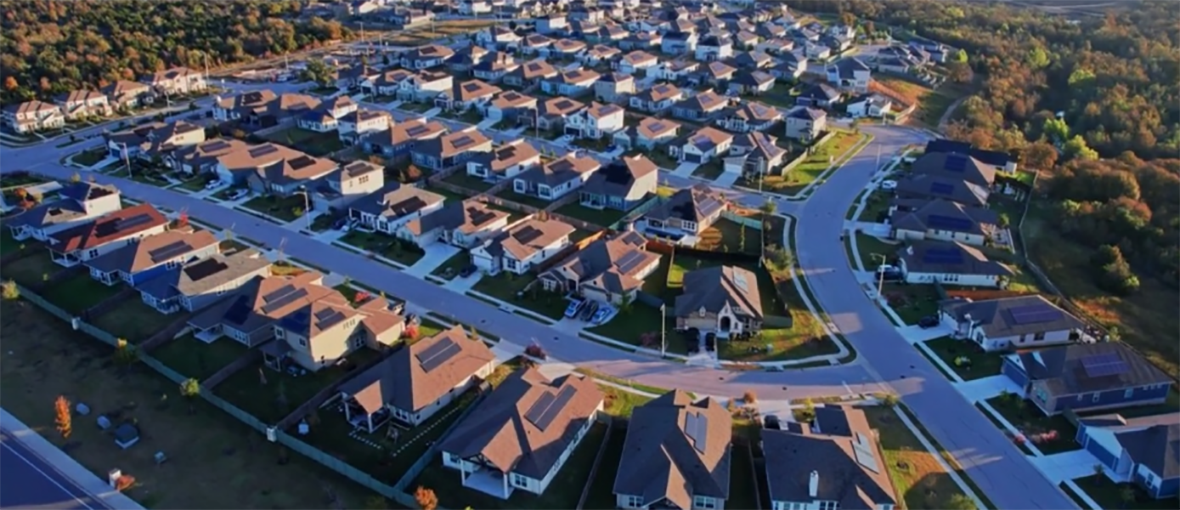Private: The Rise of Eco-Friendly Homes in Austin

Jul 18, 2024
Austin is a leader in sustainable and energy-efficient housing, with neighborhoods like Whisper Valley, Mueller, and Sweetwater pioneering eco-friendly living. Eco-friendly homes offer numerous benefits, including lower utility bills, increased property values, water conservation, reduced environmental impact, long-term cost savings, and tax incentives. Austin's eco-friendly housing trends align with the city's commitment to sustainability and environmental consciousness. Let’s explore more of the benefits and neighborhoods supporting eco-friendly housing.
Key Takeaways
- Austin is at the forefront of sustainable living, with neighborhoods like Whisper Valley, Mueller, and Sweetwater pioneering green community planning, energy-efficient homes, and environmentally conscious practices. Austin's commitment to sustainability is deeply ingrained in its culture and real estate market.
- Living in a sustainable home in Austin provides advantages such as lower utility bills through energy and water conservation, increased property values due to green certifications, improved air quality from non-toxic materials, reduced environmental impact, and integration of renewable energy sources.
- Eco-friendly homes in Austin contribute to significant long-term cost savings through energy efficiency, water conservation, tax incentives, and resilience to energy price fluctuations. Additionally, these homes minimize environmental impact by reducing energy consumption, utilizing sustainable materials, promoting sustainable lifestyles, and conserving natural resources.

Benefits of Living in an Eco-Friendly Home
- Economic Benefits: Eco-friendly homes in Austin offer substantial cost savings through reduced utility bills, thanks to features like solar panels, energy-efficient appliances, and advanced insulation techniques. These financial benefits make eco-friendly housing not just environmentally responsible but also economically advantageous for residents.
- Increased Property Value: Homes with green building certifications, such as LEED and Austin Energy Green Building, tend to have higher property values compared to conventional homes. These certifications signify the incorporation of sustainable technologies and materials, making eco-friendly homes more desirable and valuable in the real estate market.
- Improved Air Quality: Eco-friendly homes often utilize non-toxic, low-VOC (volatile organic compound) materials, which promote healthier indoor air quality. Additionally, the integration of green spaces and community gardens in eco-friendly neighborhoods contributes to improved overall air quality.
- Water Conservation: Austin's eco-friendly homes incorporate water-saving technologies like low-flow fixtures and rainwater harvesting systems, reducing water consumption and associated costs. This is particularly beneficial given Texas's periodic challenges with water scarcity.
- Reduced Environmental Impact: By prioritizing sustainable materials, energy efficiency, and responsible land use practices, eco-friendly homes in Austin minimize their environmental impact. This contributes to preserving natural resources and promoting a healthier ecosystem.
- Community and Well-Being: Eco-friendly communities in Austin often prioritize green spaces, community gardens, and sustainable living practices, fostering a sense of community and promoting overall well-being for residents.
Trends in Eco-Friendly Housing
Energy-Efficient Upgrades
- LED lighting and programmable thermostats to optimize energy use.
- Sealing air leaks, adding insulation, and choosing Energy Star-rated appliances.
- Installing solar panels to harness renewable energy and reduce electricity bills.
Water Conservation Initiatives
- Low-flow fixtures and rainwater harvesting systems in new constructions.
- Xeriscaping with drought-resistant plants to reduce irrigation needs.
- Rainwater collection systems for irrigation and non-potable uses.
Smart Home Technologies
- Smart thermostats and lighting controls for optimized heating/cooling and lighting.
- Energy monitoring systems to track and reduce usage.
- Automated systems for efficient operation.
Incentives and Supportive Policies
- Austin offers incentives like tax credits, rebates, and grants to promote sustainable practices, driving the adoption of green technologies and eco-friendly construction methods in the real estate sector.
<img src="https://storage.googleapis.com/bramlettresidential/2024/05/100ad742-austins-eco-friendly-neighborhoods.png" alt="Austins Eco-Friendly Neighborhoods" />
<h2>Austin’s Eco-Friendly Neighborhoods</h2>
<p class="no-style">Austin is at the forefront of sustainable and energy-efficient housing trends. Several neighborhoods in Austin are pioneering eco-friendly living, with notable developments such as:</p>
<ul>
<li>
<b>Whisper Valley: </b>
A master-planned community that features zero-energy-capable homes, reducing energy consumption by 70%. It utilizes solar panels, energy-efficient designs, and sustainable construction practices as standard. This community is specifically designed with sustainability as a core principle.
</li>
<li>
<b>Mueller: </b>
A mixed-use development that prioritizes renewable energy integration, solar panels, and energy-efficient designs to actively reduce its carbon footprint. It is an exemplary neighborhood that seamlessly integrates residential, commercial, and green spaces with a focus on sustainability.
</li>
<li>
<b>Sweetwater: </b>
Committed to providing eco-friendly living options, with an emphasis on green space planning, energy-efficient homes, and coexisting harmoniously with the natural surroundings. This neighborhood fosters a sense of balance and well-being through its sustainable practices.
</li>
<li>
<b>Santa Rita Ranch: </b>
Embraces sustainable living practices, offering energy-efficient homes and a collective commitment to reducing environmental impact. It encourages community engagement in fostering an eco-conscious culture, making sustainability a community-driven approach.
</li>
Other significant neighborhoods that prioritize sustainable features include:
<ul>
<li>
<b>Barton Hills: </b>
Known for its energy-efficient homes and proximity to nature.
</li>
<li>
<b>East Austin: </b>
With its mix of modern condos, lofts, and a focus on sustainable living.
</li>
<li>
<b>Hyde Park: </b>
One of Austin's oldest neighborhoods, with historic homes and a tight-knit, eco-conscious community.
</li>
These neighborhoods and planned-developments collectively showcase Austin's dedication to eco-friendly living through innovative technologies, sustainable construction practices, community involvement, and a commitment to reducing environmental impact.
Summary
In summary, Austin distinguishes itself as a pioneer in sustainable housing, presenting eco-friendly homes and developments that not only offer financial benefits, but also align closely with the city's overarching commitment to sustainability and environmental awareness. Embracing sustainable living brings about a host of advantages, including lower utility costs, heightened property values, enhanced air quality, diligent water conservation, diminished environmental footprint, enhanced walkability, and a profound sense of community. These benefits not only enrich the lives of residents but also contribute significantly to Austin's sustainability objectives while shaping the city's housing landscape and real estate market in a positive direction.
- Categories
- Private: The Rise of Eco-Friendly Homes in Austin |



